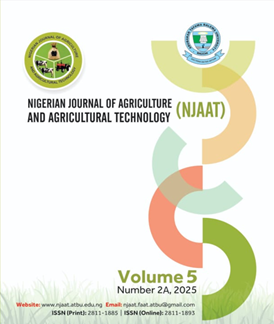MAPPING AND SUITABILITY EVALUATION OF SOILS FOR THE CULTIVATION OF TOMATOES (LYCOPERSICON ESCULENTUM L.) IN PORT HARCOURT, RIVERS STATE
Keywords:
Cultivation, Mapping, Suitability, Evaluation, SoilsAbstract
The study was conducted to assess the suitability of soils for the cultivation of tomatoes in Rivers State University Teaching and Research Farm, Port Harcourt, Nigeria. Three mapping units were identified, and the suitability of the soils was determined using pertinent suitability standards. Data from three pedons were evaluated for morphological, physical and chemical properties of the soils. Soil colour ranged from very dark to grayish brown (10YR 3/2) and yellowish red (5YR 5/8), and texturally ranged from loamy sand to sandy clay loam and structurally, from friable to sub angular blocky, well drained and deep. Results obtained revealed that soils of the study area were very low in pH and varied from 4.77- 5.29 (strongly acidic). The soils were generally low in organic carbon (0.12- 1.17 gkg), organic matter (0.20 -2.02 gkg), nitrogen (0.003-0.022 gkg), soluble potassium (0.05- 0.15 Cmol/kg) and sodium (0.17-0.31 Cmolkg). Available phosphorus varied from 6.32-31.92 mgkg. The soils were marginally suitable (S3) for the cultivation of tomatoes and in all pedons due to limitations in fertility and climate (pH, cation exchange capacity and mean annual rainfall). Appropriate measures should be taken in order to improve and maintain the fertility of soils for the cultivation of these three crops of interest (okra, tomatoes, and fluted pumpkins) in the study area.
Downloads
Downloads
Published
How to Cite
Issue
Section
License
Copyright (c) 2025 Nigerian Journal of Agriculture and Agricultural Technology

This work is licensed under a Creative Commons Attribution-NonCommercial-ShareAlike 4.0 International License.
This work is licensed under a CC Attribution-NonCommercial-ShareAlike 4.0



